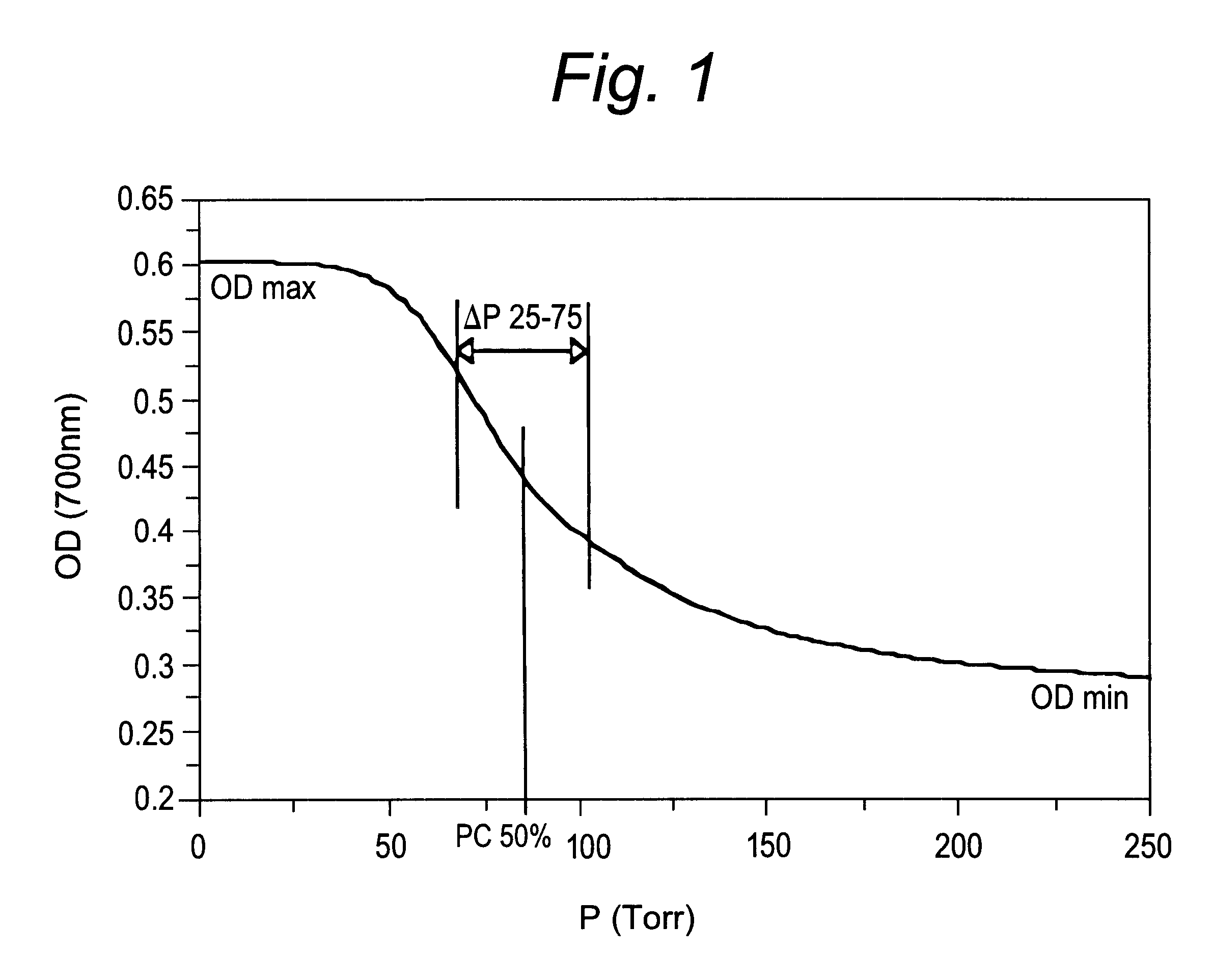Long-lasting aqueous dispersions or suspensions of pressure resistant gas-filled microvesicles and methods for thereof preparation thereof
a technology aqueous dispersions, which is applied in the field of long-lasting aqueous dispersions or suspensions of pressure-resistant gas-filled microvesicles, can solve the problems of vesicle durability, encapsulated gas-filled free space is generally too small for good echogenic response, and the concentration of bubbles is too low for being practical
- Summary
- Abstract
- Description
- Claims
- Application Information
AI Technical Summary
Benefits of technology
Problems solved by technology
Method used
Image
Examples
example 2
Aliquots (1 ml) of some of the microballoon suspensions prepared in Example 1 were injected in the jugular vein of experimental rabbits in order to test echogenicity in vivo. Imaging of the left and right heart ventricles was carried out in the grey scale mode using an Acuson 128-XP5 echography apparatus and a 7.5 MHz transducer. The duration of contrast enhancement in the left ventricle was determined by recording the signal for a period of time. The results are gathered in Table 2 below which also shows the PC of the gases used.
From the above results, one can see the existence of a definite correlation between the critical pressure of the gases tried and the persistence in time of the echogenic signal.
example 3
A suspension of echogenic air-filled galactose microparticles (Echovist.RTM. from SCHERING AG) was obtained by shaking for 5 sec 3 g of the solid microparticles in 8.5 ml of a 20% galactose solution. In other preparations, the air above a portion of Echovist.RTM. particles was evacuated (0.2 Torr) and replaced by an SF.sub.6 atmosphere, whereby, after addition of the 20% galactose solution, a suspension of microparticles containing associated sulfur hexafluoride was obtained. Aliquots (1 ml) of the suspensions were administered to experimental rabbits (by injection in the jugular vein) and imaging of the heart was effected as described in the previous example. In this case the echogenic microparticles do not transit through the lung capillaries, hence imaging is restricted to the right ventricle and the overall signal persistence has no particular significance. The results of Table 3 below show the value of signal peak intensity a few seconds after injection.
It can be seen that sulf...
example 4
A series of echogenic suspensions of gas-filled microbubbles were prepared by the general method set forth below:
One gram of a mixture of hydrogenated soya lecithin (from Nattermann Phospholipids GmbH, Germany) and dicetyl-phosphate (DCP), in 9 / 1 molar ratio, was dissolved in 50 ml of chloroform, and the solution was placed in a 100 ml round flask and evaporated to dryness on a Rotavapor apparatus. Then, 20 ml of distilled water were added and the mixture was slowly agitated at 75.degree. C. for an hour. This resulted in the formation of a suspension of multilamellar liposomes (MLV) which was thereafter extruded at 75.degree. C. through, successively, 3 .mu.m and 0.8 .mu.m polycarbonate membranes (Nuclepore.RTM.). After cooling, 1 ml aliquots of the extruded suspension were diluted with 9 ml of a concentrated lactose solution (83 g / l), and the diluted suspensions were frozen at -45.degree. C. The frozen samples were thereafter freeze-dried under high vacuum to a free-flowing powder ...
PUM
 Login to View More
Login to View More Abstract
Description
Claims
Application Information
 Login to View More
Login to View More - R&D
- Intellectual Property
- Life Sciences
- Materials
- Tech Scout
- Unparalleled Data Quality
- Higher Quality Content
- 60% Fewer Hallucinations
Browse by: Latest US Patents, China's latest patents, Technical Efficacy Thesaurus, Application Domain, Technology Topic, Popular Technical Reports.
© 2025 PatSnap. All rights reserved.Legal|Privacy policy|Modern Slavery Act Transparency Statement|Sitemap|About US| Contact US: help@patsnap.com


